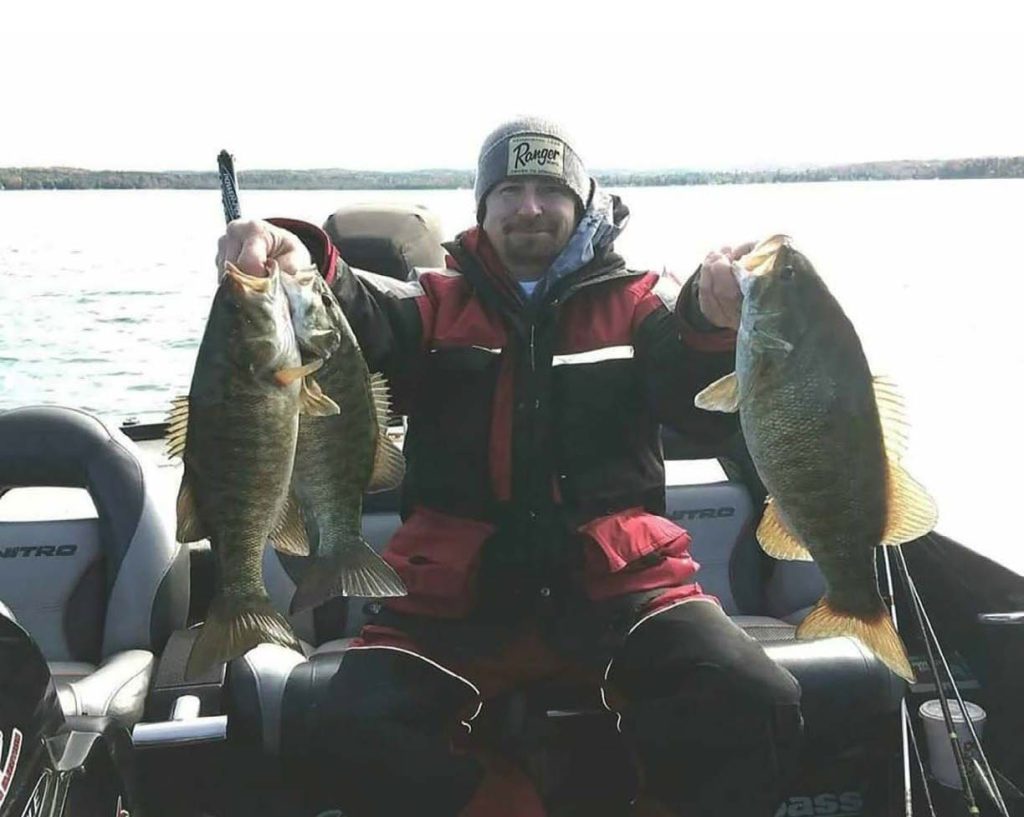What is the best bait for winter bass fishing?
If you are any kind of bass-fishing aficionado, the itch to catch the first bass of the year grows the longer winter drags on. It’s an itch that only has one cure: Catching bass. The only problem is, you must wait for the ice to thaw or head south. Once the ice is thawed, it’s go-time.
I check lakes nearest to me as I flip the calendar to March, knowing that now, it won’t be long. As soon as I have open water, I’m casting. Cold-water bass fishing is not like catching a spawning bass or a summer bass. The cold-water fish are going to be slow to move and they’ll be sluggish. They will make you work for the bite, but once they bite, that can lead to some of the biggest bass catches of the year. Let’s break down some proven baits and techniques to catch the first bass of the year along with the best baits for bass fishing.

Where to Start
Bass have been suspended in cold, deep waters all winter. As the water warms, bass start to move up into the warmer, shallower water. They are sluggish but ready to feed. For this reason, their presentations need to be fished slowly. (And when I say slow, I mean almost-not-moving-the-bait-at-all slow. Think of it this way: The last thing you’d want to do when you’re exhausted and hungry is chase down your food. It’s the same for bass. if it’s an easy meal, they will eat it.
They may not inhale your bait like they do in the spring, though, so I like to use a fast-action, medium-heavy rod with eight-to-10-pound test fluorocarbon for most of these techniques. This allows me to feel everything going on underwater (but more on that later.) You will feel the fish bump the bait, then the rod will load up when a bass goes to eat it. When this happens, you want to lean into the rod to set the hook instead of jerking it.
Remember, everything is slower when it’s cold out. The first place I start to look for bass is in and around docks and marinas. I then move to the banks that are receiving the most sunlight since they tend to warm up faster. Lastly, I will target rock lines and structures since they tend to hold heat, which means the water is usually warmer there. A few degrees can make a big difference.
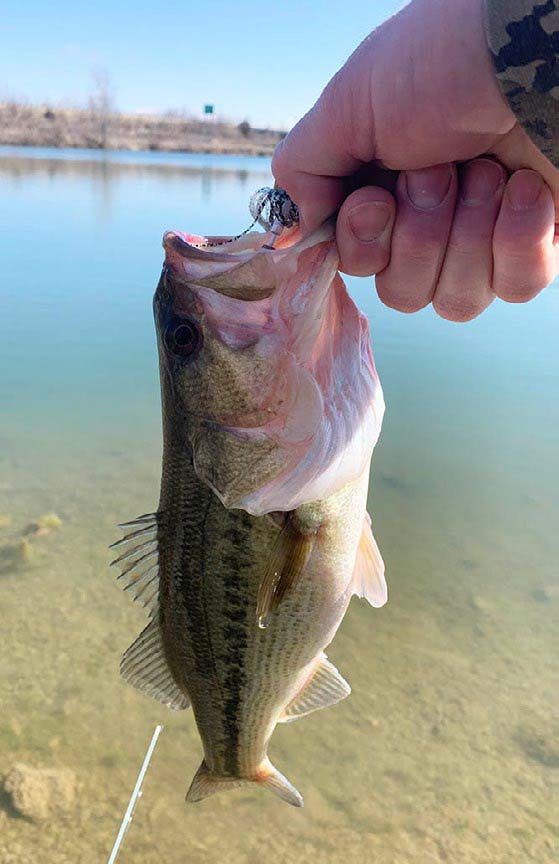
The Swimbait
I like to start with a Keitech swimbait. These baits will catch fish year-round, but can be perfect for sluggish bass. I know it’s not the bait that most people think of for ice-out, but the way I fish it can lead to some of the biggest bass of the year.
I have a dedicated baitcaster rigged with 50-pound braid to an eight-pound fluorocarbon leader year-round. I use this setup with a Kietech 3.8-inch AYU colored swimbait rigged with a Bite-Me tackle jig head. I like to drag my swimbait across the lake bottom. I cast as far as I can, let my bait hit the ground, then reel very slowly. I will pause as soon as I feel something. This allows me to tell if it’s a fish or some sort of structure, and that also gives the fish time to load up on my rod. This can be a very boring but very effective way to fish ice-out bass.
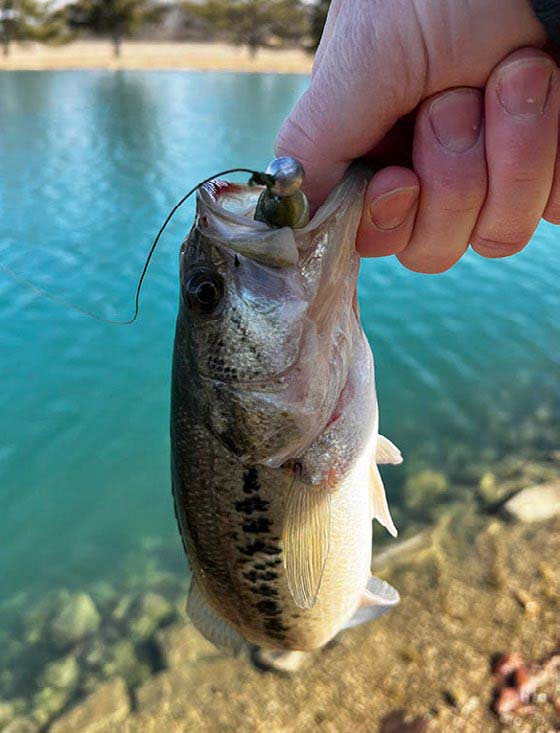
The Blade Bait
A blade bait may be one of the oldest baits that I still use. They have their place and time, and for cold-weather bass, they can shine. I like to throw these on a medium-heavy rod with a fast-action, paired with a spinning reel. I use 10-pound fluorocarbon for this style of fishing. I like to throw a ¼-ounce, all-silver blade bait. I don’t think the bait company matters much since most are made the same way. I also carry lighter and heavier sizes, but I stick to the same color, silver. I like to cast these out and bounce them off some sort of structure like a bank wall or stump. I then fish the bait back to me, snapping the rod tip up and letting the bait slowly fall. I take my time doing this all the way back to the boat. This action mimics a dying bait fish, and if you do it slowly, it presents an easy meal for a hungry bass.
The Jerk Bait
Everyone who has fished for any amount of time knows the effectiveness of jerk bait. They can be just as effective during ice-out as they are in the fall. I throw my jerk baits on a seven-foot medium rod, paired with a baitcaster and 15-pound fluorocarbon. I like the shorter rods for jerk baits, since they are easier to snap back and forth to get the jerking motion. My favorite jerk bait is a Megabass Vision 110. As far as the color, I just match it to the local bait fish in the area. Jerk baits are made to suspend at a certain depth, so you need to know how deep the water is before throwing one. Fishing with one is simple. You cast it out and snap your rod back and forth while keeping the slack reeled in. Occasionally pausing this allows the bass to take and inhale your bait. One thing to keep in mind when fishing jerk baits is that they can be costly, so I try to keep them away from areas where I could get snagged and lose the bait.
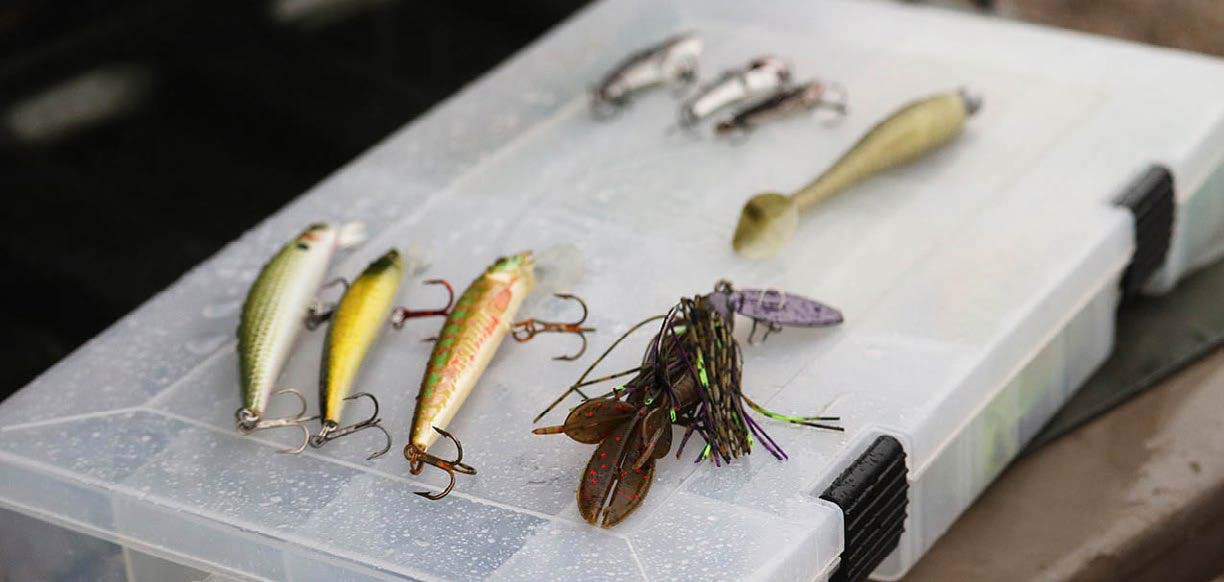
The Bladed Jig
This is another one of those baits that will catch fish year-round. The bladed jig offers something the others do not. They have flash, sound and action. They can be fished several different ways with several different trailer baits. To fish them, cast them out around some sort of grass or structure. Then drag them slowly across the bottom like a swimbait. If that doesn’t work, cast again and snap them up, then let them fall to the bottom, working the bait slowly back to you.
These baits can produce some of the biggest fish of the year. I have a dedicated medium-heavy rod with a baitcasting reel spooled with 12-pound fluorocarbon for bladed jigs. My go-to bladed jig is a 9K Elite Lures Chatterbug. I will switch out the kind of trailer I use from a small worm to a chunk-style bait. I like to keep my trailers smaller when the water is cold.
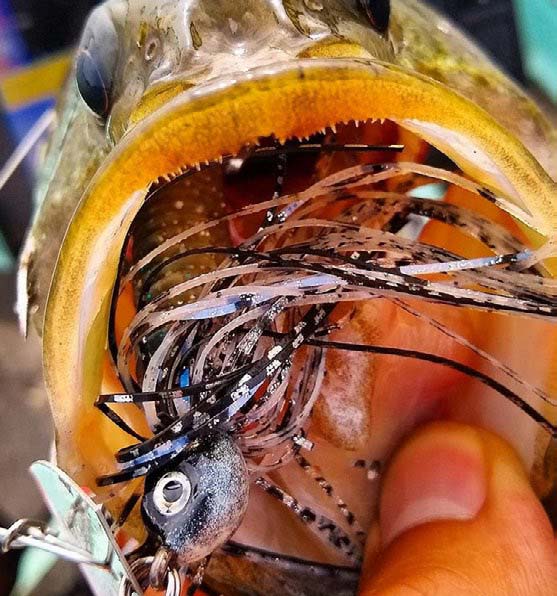
In Conclusion
Here are a few other things to keep in mind when fishing ice-out. Bass like to pack up in cold water. This helps them keep warm. If you catch one, cast your bait back to the same spot several more times. More than likely, you will catch a few more bass from that spot.
Another thing to keep in mind is that water temperature is everything. This means that some of the best fishing will be in the middle of the day when the sun makes the water the warmest. Bass will start to feed heavily in preparation for the upcoming spawn. This means that some of the best fishing can be had when the weather is not ideal for fishing. Don’t let the cold and dreary conditions stop you from some of the best days to catch your personal-best bass.
These techniques can be used on a boat or from the bank. The most important thing is to be safe around cold water and have fun.



